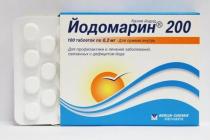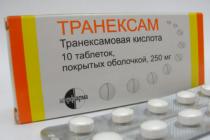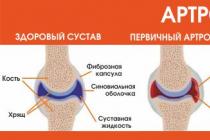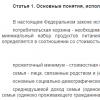(i) SODIUM TRIPHOSPATE (5-SUBSTITUTED)
Technological functions
Synonyms Sodium tripolyphosphate, sodium triphosphate; English pentasodium triphosphate, pentasodium tripolyphosphate, sodium triphosphate; German Pentanatriumtriphosphat, Pentanatriumtripolyphosphat, Natri-umtriphosphat; fr. triphosphate de pentasodium, tripolyphosphate de pentasodium, triphosphate de sodium.
CAS# 7758-29-4.
Empirical formula Na 5 O 10 P 3 .
Mol. m. 367,86.
Appearance White, slightly hygroscopic powder or granules.
Physiochemical properties Chorus. sol. in water; insoluble in ethanol.
Receipt By thermal dehydration of a mixture of Na 2 HPO 4 and NaH 2 PO 4 at a molar ratio of 2:1, anhydrous sodium triphosphate is obtained, followed by vacuum crystallization of its 17-20% solutions, a hexahydrate is obtained.
Specifications
|
Index |
GOST 13493-86 E*FCCIV(food) |
|
|
Not less than 57.0 |
||
|
Loss on drying (105°С, 1 h), %, no more |
||
|
Not sol. in water in-va,%, no more |
||
|
Fluorides, mg/kg, no more |
||
|
As/Pb/heavy met., mg/kg, no more |
||
|
Mass, fraction of the first form of tripolyphosphate |
||
|
sodium, %, no more |
||
|
Iron, %, no more |
||
|
pH 1% solution |
||
|
Heavy metals deposited |
||
|
hydrogen sulfide %, no more |
||
|
Arsenic, %, no more |
||
|
Granulometric composition: passes through |
||
|
sieve according to GOST 6613-86 ** with dimensions of one hundred |
||
|
rones of the cell in the light 0.25 mm, %, not less |
||
|
Degree of whiteness, %, not less |
||
|
Flowability, %, not less |
GOST 13493-86 “Sodium tripolyphosphate. Specifications".
** GOST 6613-86 “Woven wire meshes with square meshes. Specifications".
Hygiene standards ADI 70 mg/kg body weight per day. Codex: permitted as an emulsifying salt in processed cheeses up to 9 g/kg* 0 ; in 10 standards for meat and fish products in the amount of 3 to 5 g/kg*’; in 6 standards as a stabilizer in an amount of 1 to 5 g/kg of dry matter, individually or together with other stabilizers. In the Russian Federation, it is allowed as a consistency stabilizer, emulsifier, thickener, texturer, binding agent, flour and bread improver, in pre-fried potatoes, frozen in an amount up to 100 mg / kg; in specialized drinks for athletes, artificially mineralized soft drinks in an amount up to 500 mg/kg; in fruit products, glazed fruits in an amount up to 800 mg/kg; into sterilized milk, concentrated milk with a solids content of less than 28%, ice cream (except milk and cream), fruit ice, surimi minced fish, alcoholic beverages in an amount up to 1 g / kg; in concentrated milk with a solids content of more than 28% in an amount of up to 1.5 g/kg; in young cheeses, milk-based chocolate and barley drinks, sour cream butter, pasta, cider (apple and pear), tea and herbal teas dry, instant, up to 2 g/kg; in dry and skimmed milk, flour in an amount up to 2.5 g/kg; in desserts, including milk-based (ice cream), soups and broths (concentrates), flavored syrups (decorative coatings) for milkshakes, ice cream, syrups for pancakes, pancakes, Easter cakes in an amount up to 3 g/kg; in glaze for meat and vegetable products in the amount of up to 4 g/kg; into pasteurized, sterilized cream, whipped cream and their analogues based on vegetable fat, sandwich margarines, potato processing products, including frozen, chilled and dry, sugary confectionery products, whipped batter, fermented liquid semi-finished product, whipped egg mixture for omelettes, liquid breading, cereal products produced by extrusion technology, dry breakfasts, specialized food products, raw fish and fillets, fish and shrimp paste, sauces in quantities up to 5 g/kg; in meat products in an amount of up to 5 g of added phosphate per 1 kg of raw meat; in frozen crustacean products in an amount of up to 5 g of added phosphate per 1 kg of raw materials from crustaceans, in canned crustaceans in an amount of up to 1 g of added phosphate per 1 kg of raw materials from crustaceans, in frozen fish mince and products from it in an amount of up to 5 g added phosphate per 1 kg of raw fish; in desserts, powdered dry mixes in an amount up to 7 g/kg; in powdered sugar, dry egg products (melange, protein, yolk), salt and salt substitutes in an amount up to 10 g/kg; in processed cheeses and their analogues, bakery and flour confectionery products, dry mixes based on flour with the addition of sugar, baking powder for baking cakes, cakes, pancakes, etc., drinks based on vegetable proteins in an amount of up to 20 g/kg; in opacifiers for drinks in an amount up to 30 g/kg; in biologically active additives to food in an amount according to TI individually or in combination with other phosphates in terms of P 2 O 5 (clauses 3.2.26,3.6.56,3.7.15 SanPiN 2.3.2.1293-03).
* Individually or together with other phosphates.
Application In the food industry, it is used in the form of hexahydrate in the production of canned and frozen meat and fish products to improve texture, as well as in the production of processed cheese as melting salt. Often used along with other phosphates and citrates. Alone or in combination with other stabilizers, it is used in the production of cream, condensed milk, milk powder and cream.
Sodium triphosphate according to GOST 13493-86 “Sodium tripolyphosphate. Specifications" is included in the list of raw materials in GOST 18236-85 "Cooked pork products. Specifications”, GOST 18255-85 “Smoked and boiled pork products. Specifications”, GOST 23670-79 “Cooked sausages, frankfurters and sausages, meat loaves. Specifications".
Other areas of application: in the production of detergents and cleaning agents, surfactants in the production of cement, in the textile industry.
(ii) POTASSIUM TRIPHOSPATE (5-SUBSTITUTED)
Technological functions Acidity regulator, emulsifying salt, stabilizer, color fixer, antioxidant synergist.
Synonyms Potassium tripolyphosphate, potassium triphosphate; English pentapotassium triphosphate, pentapotassium tripolyphosphate, potassium triphosphate; German Pentakaliumtriphosphat, Pentakaliumtripolyphosphat, Kaliumtriphosphat;
E-451 Triphosphates: sodium triphosphate, potassium triphosphate.
Characteristic:
Triphosphates are a type of stabilizer used to maintain the viscosity and consistency of food products. It is also used as an emulsifying salt, color fixative, antioxidant synergist, texturizer, complexing agent and acidity regulator. Additive E-451 has the structure of a hygroscopic powder or white granules, it is highly soluble in water, insoluble in ethanol. There are two types of E-451 additive: E-451i - sodium triphosphate Na5P3O10; E-451ii - potassium triphosphate K5P3O10. Triphosphates are obtained by thermal dehydration of the initial mixture to extract anhydrous sodium triphosphate with its subsequent vacuum crystallization. Possible ways to obtain sodium triphosphate can be visualized in the form of chemical reactions: 6 H3PO4 + 5 Na2CO3 → 2 Na5P3O10 + 5 CO2 + 9 H2O; NaPO3 + Na4P2O7 → Na5P3O10; Na3P3O9 + 2 NaOH → Na5P3O10 + H2O; 2 Na2HPO4 + NaH2PO4 → Na5P3O10 + 2 H2O. Potassium triphosphate obtained by carrying out similar chemical reactions, dehydration of a mixture of K2HP04 and KH2P04 in a molar ratio of 2:1 at 325-400°C. Impurities: other potassium phosphates.
Application:
Additive E-451 Triphosphates as stabilizers are most suitable for the meat processing and sausage industries in the production of sausages and sausages. Almost all food phosphates and their mixtures, which are used in the meat processing and fish industries, have an alkaline reaction. By adding them to meat and fish, the acidity of the products increases, and as a result, the muscle fibers of the meat are able to accumulate a large amount of water, due to which the mass and volume of the finished product more than doubles. When defrosting a product with E-451 volume and mass decreases, and the consistency deteriorates. Despite the many negative properties and obvious harm to the human body, the supplement E-451 present in almost all types of sausages and many other foods. Triphasphates are allowed as emulsifying salts in the following food products:
- processed cheeses up to 9 g/kg;
- in 10 standards for meat and fish products in the amount of 3 to 5 g/kg;
- in 6 standards as a stabilizer in an amount of 1 to 5 g/kg of dry matter, alone or together with other stabilizers.
- up to 100 mg/kg allowed as a consistency stabilizer, emulsifier, thickener, texturizer, binding agent, flour and bread improver, in pre-fried, frozen potatoes;
- into specialized drinks for athletes, artificially mineralized soft drinks up to 500 mg/kg;
- in fruit products, glazed fruits in an amount up to 800 mg/kg;
- into sterilized milk, concentrated milk with a solids content of less than 28%, ice cream (except for milk and cream), fruit ice, minced fish "surimi", alcoholic beverages in an amount of up to 1 g / kg;
- in concentrated milk with a solids content of more than 28% in an amount of up to 1.5 g/kg;
- in young cheeses, milk-based chocolate and barley drinks, sour cream butter, pasta, cider (apple and pear), dry tea and herbal teas, instant, up to 2 g/kg;
- in dry and skimmed milk, flour in an amount up to 2.5 g/kg;
- in desserts, including milk-based (ice cream), soups and broths, flavored syrups for milkshakes, ice cream, syrups for pancakes, pancakes, Easter cakes in an amount up to 3 g/kg;
- in glaze for meat and vegetable products in the amount of up to 4 g/kg;
- into pasteurized, sterilized cream, whipped cream and their analogues based on vegetable fat, sandwich margarines, potato processing products, including frozen, chilled and dry, sugary confectionery products, whipped batter, fermented liquid semi-finished product, whipped egg mixture for omelettes, liquid breading, grain products, dry breakfasts, specialized food products, raw fish and fillets, fish and shrimp paste, sauces in amounts up to 5 g/kg;
- in meat products in an amount of up to 5 g/kg of raw meat;
- in frozen crustacean products in the amount of up to 5 g/kg of crustacean raw materials;
- in canned food from crustaceans in the amount of up to 1 g/kg of raw materials from crustaceans;
- in frozen fish mince and products from it in an amount of up to 5 g / kg of fish raw materials;
- in desserts, powdered dry mixes in an amount up to 7 g/kg;
- in powdered sugar, dry egg products (melange, protein, yolk), salt and salt substitutes in an amount up to 10 g/kg;
- in processed cheeses and their analogues, bakery and flour confectionery products, dry mixes based on flour with the addition of sugar, baking powder for baking muffins, cakes, pancakes, drinks based on vegetable proteins in an amount up to 20 g/kg;
- in opacifiers for drinks in an amount up to 30 g/kg;
- in biologically active food supplements in the amount according to TI individually or in combination with other phosphates in terms of P205 (clauses 3.2.26, 3.6.56, 3.7.15 SanPiN 2.3.2.1293-03). Additive E-451 can be used in products either alone or in combination with other stabilizers. Other areas of application: in the production of household chemicals, detergents, cleaners and cosmetics, surfactants in the production of cement, in the textile industry. Additive E-451 allowed for use in the food industry of the Russian Federation. Also additive E-451 included in the list of permitted food additives in Ukraine.
Impact on the human body:
Triphosphates are dangerous additives, therefore, the maximum allowable amount of substance intake per day is 70 mg / kg of human body weight. If the prescribed dosage is exceeded, severe inflammation of the mucous membranes of the body, in particular the organs of the digestive system, may occur, indigestion may occur, deterioration in the absorption of calcium with an excess of phosphates, which leads to the deposition of calcium and phosphorus in the kidneys, and contributes to the development of osteoporosis. Triphosphate is hydrolyzed in the intestine to orthophosphate, which in large quantities can cause metabolic acidosis. In children with an overdose E-451 there may be a state of nervousness and an acute lack of calcium, and can also have a negative effect on the skin. It is believed that triphosphate acts as a cancer-forming and raises blood cholesterol levels. As a result of studies of triphosphates, it was found that when using the supplement E-451 no mutagenic changes are observed. Animal studies have shown that the supplement E-451 does not affect reproductive functions, fertility and offspring, as well as the growth or survival of offspring. Additive E-451 is a strong allergen, therefore, even when working with triphosphates, certain safety measures should be observed. If the substance gets into the eyes, immediately rinse them with water and consult a doctor, in order to avoid getting the substance into the respiratory tract, workers should use respirators. A ventilation system must be installed at the enterprise without fail.
The article describes a food additive (complexing agent, acidity regulator, texturer) triphosphates (E451), its use, effects on the body, harm and benefits, composition, consumer reviews
Other additive names: triphosphates, E451, E-451, E-451
complexing agent, acidity regulator, texturer
Triphosphates, E451 - what is it?
Additive E451 is a part of meat and sausage products
Triphosphates are compounds of tripolyphosphoric acid, which are sodium or potassium salts. Triphosphates (their general designation E451) are produced by chemical synthesis and appear as white granules or white powder.
The salt of tripolyphosphoric acid, which has sodium in its composition, is designated by the index E451i, and the similar salt of this acid, which has potassium in its composition, respectively, is designated as E451ii.
Triphosphates, E451 - effect on the body, harm or benefit?
Is the E451 additive harmful to health? Triphosphates are far from a harmless food additive that is quite capable of harming the body. Excess phosphate in the body reduces its ability to absorb calcium, which causes the accumulation of phosphorus and calcium in the kidneys and leads to the development of osteoporosis.
The harmless tolerable daily intake (ADI) of the E451 supplement should not exceed 70 mg per day per kg of human weight.
Unlimited and constant consumption of foods with triphosphates can be harmful to health and cause inflammation of the mucous membranes and, in particular, the organs of the human digestive system. Additive E451 can cause severe dysfunction of the digestive system. If certain amounts of the E451 supplement enter the stomach of children, they may be in a nervous state, and a lack of calcium in their body may also form.
Triphosphate breaks down in the digestive system into less complex substances - orthophosphates, which can cause a disease called metabolic acidosis.
It is believed that the addition of E451 can increase the amount of cholesterol and manifests itself as a cancer-forming substance. Summarizing the above, it should be noted that the consumption of E451 supplements in increased quantities can be harmful and have a negative impact on health.
Despite all of the above, the use of triphosphates is legally permitted in the countries of the European Union, Ukraine, Russia and other countries of the world.
Food additive E451, triphosphates - use in food
In the field of food production, triphosphates perform a variety of functions. They can act as an acidity regulator, stabilizer, texturizer, color fixer, antioxidant, complexing agent, emulsifier. The most widely, or rather very, very often, triphosphates are used in the production of meat products (for example, sausages and frankfurters) and in the fish processing industry. Processing of meat and fish with triphosphates is carried out in order to increase the acidity of these products, and in the future, to increase the ability of their proteins to retain moisture. After such processing, meat protein fibers acquire the ability to be saturated with a large amount of water and increase in volume by two times or more. This property of triphosphates allows you to seriously increase the mass of the finished product. But, unfortunately, after defrosting a food product with the addition of E451, its volume decreases significantly and it has a worse consistency.
Triphosphates also improve and promote the emulsification of fats. Also, triphosphates are used in the production of milk, ice cream, cheeses, butter, egg products, confectionery, in baking various muffins, cakes, in the production of icing, pasta, minced fish, dry soups, sandwich margarine, syrups, soft drinks, canned foods .
Food additives triphosphates are substances with pronounced stabilizing properties. As part of food products, they are designed to preserve their taste, smell and color in their original form during the shelf life. The starting material from which triphosphates are obtained is tripolyphosphoric acid, a derivative of phosphorus. Of course, there is no question of any natural origin of the additive; moreover, one of the varieties of phosphorus is generally poisonous. However, the food stabilizer with the E451 code, obtained in laboratories as a result of several stages of chemical procedures, did not show pronounced toxic properties as a result of long-term studies, so it is often added to food products. However, there is no definitive answer as to whether this supplement is completely safe.
The origin of triphosphates, their chemical properties
The main types of phosphorus found in nature are white, black and purple. Modifications of these species are yellow and red. In the process of burning phosphorus, phosphoric anhydrite is formed - a substance from which, by hydration, tripolyphosphoric acid is obtained. The synthesis of salts, which are triphosphates, comes from a mixture of phosphoric acids and some other components - they are subjected to dehydration by heating. The resulting substance then goes through the process of crystallization. The food supplement is in the form of a white powder or granulate. It is insoluble in ethanol, but highly soluble in ordinary water.
Due to their properties, triphosphates have a wide range of applications in the food industry. They are used as structurators, that is, components designed to improve the structure of the product; as acidity regulators - they can establish and maintain a certain level of acid-base environment in the product; as stabilizers - triphosphates contribute to the preservation of the appearance, shape, color and smell of food; as emulsifiers - elements with surface activity, helping to create mixtures of normally immiscible products.
Subspecies of food additive E451
Since elements such as sodium and potassium can participate in the process of synthesis of a substance, several types of triphosphates are distinguished in the industry, respectively.
For their extraction, slightly different initial mixtures are used, therefore, as a result of the reaction, it can turn out:
- sodium triphosphate (E451i);
- potassium triphosphate (E451ii).
The chemical formulas of substances differ from each other, as well as their level of safety for the human body: potassium triphosphate is considered a more harmful additive.
The role of the substance in industry
On the largest scale, the E451 stabilizer is used in the production of meat and fish products: sausages, sausages, canned food, preserves. The triphosphates used in this case have an alkaline reaction, and, when added to meat and fish, they lead to an increase in the acidity of the feedstock. Because of this, the muscle fibers of meat accumulate a large amount of water, and the mass and volume of the product at the outlet increases. If you subject the meat or fish processed in this way to heating, their volume and mass will decrease again. The permissible content of triphosphates in meat and fish is up to 5 g per 1 kg. In various dairy products, the food additive is used because of its ability to emulsify fats.
In addition to these products, the substance is used for the preparation of:
- processed cheese (no more than 9 g per 1 kg of product mass);
- flour bread, frozen blanks of pre-fried potatoes (up to 100 mg per 1 kg);
- specialized drinks for athletes, artificially mineralized drinks (less than 500 mg per 1 kg);
- fruit products, canned food, glazed fruits (up to 800 mg per 1 kg);
- cheeses, concentrated milk, ice cream, fruit ice, surimi minced fish, milkshakes, cider, pasta (no more than 2 g per 1 kg of product weight);
- desserts, dry soups and broths, syrups (up to 3 g per 1 kg);
- cream, margarine, whipped batter, breakfast cereals, shrimp paste, potato products (up to 5 mg per 1 kg).
Also, triphosphates are found in the compositions of baking powder, various bakery products, powdered sugar, desserts, many convenience foods, minced fish, canned seafood. They are often combined with other phosphates and citrates.
In addition to food, the component can be found in detergents, it is used in the production of cement, in the cosmetic, perfumery and textile industries, as well as to protect surfaces from corrosion.
Safety and impact on human health
Experiments on laboratory animals and long-term studies have confirmed the fact that the food supplement E451 cannot be considered completely safe for health. If we talk about positive findings, there are only a few of them: the substance does not affect reproductive function and does not cause infertility. Science does not yet have information about possible mutagenic reactions, as well as any dependence on the number of offspring or their ability to survive.
Regarding the effect on the body, it is known that the E451 stabilizer is not excreted in the process of life, that is, it has the property of accumulating in organs and cells. It can negatively affect the mucous tissues, and therefore its constant use will cause the appearance of inflammatory processes in them. This is especially true of the digestive system, so people with diseases of the gastrointestinal tract are especially advised to avoid products with this substance in their composition.
Orthophosphates, into which the additive breaks down in the human stomach, can change the alkaline-acid balance in the body towards increasing acidity, and can also disrupt metabolic processes.
The accumulation of a substance obtained from food causes a violation of the absorption of calcium. As a result, calcium and phosphorus begin to be deposited in the kidneys by sand and stones, osteoporosis develops.
The additive also negatively affects the nervous system, in large quantities causing its sharp overexcitation.
Allergy sufferers and asthmatics should be doubly careful about this component in food, as it has the properties of an allergen, can provoke asthma attacks, reddening of the skin and a rash.
For food workers who encounter triphosphates at work, special precautions are provided, since interaction with substances can cause harm to the body. It is forbidden to work with triphosphates without a respirator, and the premises in which any processes with substances are carried out must have a powerful and constantly working ventilation system. If the additive gets on the mucous membranes or skin, the place should be washed very thoroughly with water and immediately seek medical help to neutralize the consequences.
Despite the known danger, triphosphates are allowed for use in Ukraine, Russia and some countries of the European Union.
The stabilizer and emulsifier under the code E451 is a well-known component of meat and fish products: preserves, canned food and minced meat. With its help, manufacturers manage to save on the quality and quantity of raw materials, since the use of triphosphates allows you to increase the weight of the product that will go on sale due to water. Because of this, the consumer buys water at the price of meat or fish, and this is not the only disadvantage of using triphosphates. According to studies, the substance negatively affects various processes in the body, causes a violation of the absorption of calcium, and contributes to its deposition in organs. The cumulative property of the supplement over time can cause inflammatory processes in the body, provoke the growth of tumors. For children, pregnant women and the elderly, it is better to refuse to eat food with these elements in the composition. A healthy adult is also not recommended to abuse foods processed with the E451 food additive.
E450 E-451 E-452
Food additives are chemicals that manufacturers add to their products during the manufacturing process to give the final product the desired properties: to enhance taste, maintain consistency, give a more appetizing color, and to increase shelf life.
On the label containing the composition of the product, such additives are classified under code E and a combination of three numbers.
The combination of numbers indicates a specific classification of the substance.
One of these additives is triphosphates and polyphosphates sodium and calcium, and some of them can be harmful to health.
What are phosphates and what do they eat with?
Phosphates are food stabilizers, acting under the coding E400 - E499.
They are used to maintain the improved viscosity and consistency of the product.
Most often they are used in meat industry, producing meat, sausages, sausages and sausages
Especially valuable for the manufacturer is the special property of these substances: they stabilize the color of the product, giving it an appetizing color.
All these additives, when added to food products, play role:
- stabilizers;
- emulsifiers;
- acidity regulator;
- baking powder;
- retain moisture.
Consider main stabilizers: E450, E451, E452.
Types of triphosphates and polyphosphates
E450
The nutritional supplement most commonly found under the code E450 belongs to the category stabilizers.
According to its chemical properties, it is a pyrophosphate.
wide industrial E450 found application in the meat processing industry of the food industry.
This is due to the fact that it increases the percentage of mass yield of finished meat products, gives it an appetizing color and normalizes the consistency, and also slows down the rate of the oxidation process.
 The addition of E450 to meat products improves the structure minced meat.
The addition of E450 to meat products improves the structure minced meat.
It can be found in dairy products, as well as in processed cheeses.
In the non-food sector, they are added to household detergents and anti-corrosion chemical agents.
Pyrophosphates under the E450 index are officially included in the list of food additives approved for use, which do not seem to harm human health.
But frequent use can lead to destruction balance of phosphorus and calcium.
Fans of sausages containing E450 are at risk of impaired calcium absorption, and this will further lead to accumulation of calcium and phosphorus in the kidneys and even to osteoporosis.
There is an opinion that E-450 is a cancer-forming substance and contributes to an increase in cholesterol in the blood.
Daily rate the use of triphosphates and sublyphosphates should not exceed 70 mg per 1 kg of human weight!
Such products should be treated with extreme caution.
At risk are people whose daily diet contains a lot of foods containing phosphorus.
E-451
Another nutritional supplement chemical origin, which can often be found on the packaging of sausages or sausages, is a stabilizer under the code E451: let's figure out whether it is harmful or not and consider its effect on the human body.
Triphosphates maximum comfortable fit for use in the meat processing industry as a stabilizer, namely in the industrial production of sausages and frankfurters.
 This nutritional supplement is found in virtually all types of prepared sausages, as well as in many other food products.
This nutritional supplement is found in virtually all types of prepared sausages, as well as in many other food products.
Due to the alkaline reaction, when added to meat or fish, significantly increased acidity, and due to the fact that muscle fibers begin to accumulate water, the mass of finished products increases.
This, of course, is very beneficial for the manufacturer.
Triphosphates are also allowed for supplementation into the following types food products:
- in flour and bread, in pre-fried frozen potatoes;
- in sports and carbonated soft drinks beverages;
- in glazed fruits;
- in sterilized or powdered milk, ice cream, fruit ice;
- in alcoholic beverages and ciders;
- in concentrated milk;
- in young cheeses and in processed cheeses;
- in drinks based on milk, in butter, pasta, tea and in dry teas based on herbs of quick dissolution;
- in all types of cream;
- in food and preserves from crustaceans, into frozen minced fish;
- in various desserts and ready-to-cook mixtures in powder form;
- in powdered sugar and dry egg products, in table salt and its substitutes.
As we can see, the list contains all major products consumption.
And this is very sad, since E451 is capable of causing significant harm to our health.
With increased use of products containing the additive, a healthy person may experience severe health problems.
The mucous membranes of the body, namely the mucous membranes of the digestive organs, become inflamed.
Perhaps an upset of the intestines and stomach, a deterioration in the degree of absorption of calcium associated with an excess of phosphates, which again leads to the development of osteoporosis.
In children with the constant use of products with stabilizers, there is increased nervousness and excitability, as well as an acute shortage of calcium.
As a result of scientific studies conducted on animals, it was found that the stabilizer E451 is not able to influence on reproductive function, as well as on the growth or degree of survival of the offspring.
Additive E451 also is the strongest allergen, this should also not be forgotten, since recently the number of children with allergies has increased dramatically, given its harmfulness.
E-452
This supplement also belongs to the category
stabilizers .
Also used to retain large amounts of water in meat products.
Polyphosphates E452 slow down reactions chemical type and biological processes.
Therefore, in the food industry, they are more often used to stop fermentation and in order to reduce the rate of molding of products.
Due to the fact that the fact of the harmful effects of the additive on the human body has been clinically established, E-452 is now rarely added to food products.
But she comes in to the allowed list for taking supplements.
It can be seen in processed cheeses and in various dairy products.
Most often it is used in the production of household detergents and anti-corrosion agents.
Scientific studies have proven that E452 is actively involved in metabolic processes in the human body at the cellular level.
How to protect yourself from the harmful effects of food additives?
In conclusion, I would like to note that on the shelves of our stores there are already no products left, which would not include at least one food additive.
The exception is farm or subsistence farms.
But not every city dweller can afford buy daily farmer's produce.
Therefore, you should come to terms with the presence of chemistry in products.
Triphosphates and polyphosphates, unfortunately, do not add benefits to the body.
In many civilized countries, they are completely banned for use in the food industry.
Unfortunately, in the list of these countries Russia Excluded.
E-451 (Sodium triphosphate) is a salt solution of tri-polyphosphoric acid Na5 P3 O10, is a food additive, where it is used as an emulsifier. Outwardly, it is a hygroscopic or granular white powder, produced by the so-called dehydration synthesis of the mixture. In the manufacture of food products, tripolyphosphate acid is used as a product viscosity controller, a texturizer, a complexing agent, and an antioxidant. Not unimportant reason for the use of salt is its ability to preserve the color of products.
E-451 is subdivided into sodium triphosphate (with the chemical formula Na5 P3 O10) and potassium triphosphate (with the formula K5 P3 O10).
E-451 is especially in demand in the technological process of manufacturing sausages and sausages. When using an additive, meat fibers concentrate a larger volume of water, due to which the mass of products at the outlet increases accordingly, and even more than several times.
IT'S IMPORTANT TO KNOW!
To lose weight in 30 days, you need to apply 3 important processes: preparation..
Triphosphates can also be added to other products:
- Milk and cheeses.
- Butter and margarine used for sandwiches.
- Baking and confectionery.
- Dry soups.
- Pasta.
- Minced fish.
- Canned food.
- Syrups and toppings.
- Soft drinks, etc.
Is it worth eating food containing E-451 emulsifier?
Phosphates themselves are hazardous food additives, in this connection, the systematic use of products, which include this emulsifier, leads to inflammatory processes in the mucous membranes of the body, and especially in the digestive tract. In the stomach, triphosphate breaks down into small particles - orthophosphates, which in large quantities cause a shift in the acid-base balance of the body in the direction of increasing acidity, the so-called metabolic acidosis.
Due to the large amount of this trace element in the body, the absorption of calcium decreases, which directly leads to the deposition of calcium and phosphorus in the kidneys, and develops osteoporosis. In children, the nervous system is overexcited, which leads to constant nervousness and a sharp lack of calcium in the body, and this is fraught with serious consequences. Large absorption of products, with the emulsifier E-451 leads to unpleasant and severe indigestion. The possibility of provoking a cancer-forming effect with further negative consequences is not excluded. The skin also suffers from this substance, due to the predominance of allergenic qualities.
Also, animal studies have shown that the addition of E-451 does not affect reproductive functions, fertility and offspring, as well as the growth or survival of offspring.
Triphosphates are very dangerous substances when they are handled. They cause irreparable damage to the human skin. Therefore, people who encounter triphosphates while working should follow the safety rules:
- If at work this substance has got on the mucous membrane of the eye, rinse with clean water as soon as possible. After that, be sure to go to a specialist.
- To prevent the harmful component from entering the respiratory tract, all workers must wear respirators.
- An enterprise with no ventilation is not allowed to work with these substances.
Noticed fact! If you put a product with the presence of E 451 in the freezer and then defrost, the product will significantly decrease in size, and the consistency will become much worse.
Additive E451 can also be used in the manufacture of cosmetics and household chemicals. At the same time, there will be nothing useful in it, on the contrary, you can harm the skin with the constant use of any of the products.
Additive E-451 is approved for use in the food industry of the Russian Federation. Also, the E-451 additive is included in the list of permitted food additives in Ukraine.
It can be concluded that the E-451 supplement benefits only food manufacturers, but the body is harmed.
On a note! Food additives such as E451 tend to accumulate in the human body. Their influence is difficult to determine initially, but over time, health problems may appear, the causes of which are difficult to establish. To avoid this, you should be attentive to the diet, reduce the consumption of food with food additives and stabilizers. Cosmetics and household chemicals also have a gradual negative impact. Maybe it was not in vain that grandmothers wiped their faces with a decoction of chamomile, and washed the dishes with mustard powder.
Almost all modern food products contain a wide variety of additives. Very often or even almost always, the consumer does not know about the harm that certain stabilizers and food additives can cause. The truth about the components that are included in the finished product is carefully hidden by manufacturers. In this article, we will consider in more detail what pyrophosphates are, what are their scope of use and negative qualities.
What is a stabilizer?
The food industry uses a variety of additives to achieve specific color, flavor, and special qualities that help keep food fresh.
A stabilizer is a type of inorganic compound that is actively used by manufacturers to preserve the structure of a product for a long period of time. With the help of such substances, the product looks ready for use for a long time. It does not form mucus, and it does not look viscous. Therefore, the shelf life of the product is increased.
What is pyrophosphate?
Pyrophosphate is an ester or salt of pyrophosphoric acid. The types of pyrophosphates and the table will be discussed below.
With the help, the color is stabilized and the consistency of the product is improved, and oxidative processes are also slowed down. They have bactericidal and antioxidant effects. They are actively used for preserving meat and can be included in dairy products.
The formula of pyrophosphates is: P 2 O 7. Their frequent use can upset the balance between calcium and phosphorus. As a result, calcium will be less absorbed and begin to be deposited in the kidneys. This process will lead to the development of osteoporosis in the body. If your diet contains a lot of phosphorus, then you need to be especially careful about eating foods with phosphates.

Classification of pyrophosphates
There are 8 types of pyrophosphates in all food production. Each is denoted by a Roman numeral. This index is written next to the name 450. This additive is the most famous among all those used in the production of products. Consider the types of pyrophosphates in the table.
E450 (pyrophosphates): description
So, we learned what a stabilizer and pyrophosphates are, examined their types. Now let's take a closer look at other nutritional supplements. The most famous of these is sodium and potassium pyrophosphate. The food industry is very actively using this additive, especially the meat processing industry has succeeded in this. Consumers have seen it on product labels, but many are unaware of its properties and how much it can be consumed so as not to put themselves at risk.

Sodium pyrophosphate must be subjected to oxidation in order to obtain this well-known additive. Hydrochloric acid in this case is used as an oxidizing agent. This reaction leads to the removal of water from the solution, and the resulting compound retains moisture well. Thus, the well-known stabilizer E 450 is obtained. It is contained in dairy products, juices, minced meat, and confectionery.
In addition to cooking, this additive is found in detergents, insect repellants, and various paints.
What is this stabilizer for?
Most often, this stabilizer is used in the food industry as a baking powder, water retainer, acidity regulator. E 450 can be viewed under a microscope. There it has the appearance of a crystalline powder or white granules.
This additive is legal, so almost all manufacturers use it. The main function is to increase the volume and mass of the product. Therefore, its use is very beneficial for manufacturers.
But besides this main function, the E 450 has other purposes:

Potassium and sodium pyrophosphates can form a homogeneous consistency, so the product stays fresh for a longer time and has a pleasant appearance.
Body reaction
Ukraine, Russia, EU countries consider pyrophosphates as permitted additives. The exception is the eighth species (dimagnesium pyrophosphate). It has already been banned in the EU, but in Russia it is allowed. E 450 have a third, therefore, they cannot be called safe for the body.
It is believed that small dosages of this dietary supplement are completely harmless. But each organism is individual, and the reaction to the same amount of a substance is also different. It has been proven that due to this dietary supplement, blood pressure rises, allergic reactions may occur, digestion worsens, and the level of digestibility of essential substances from food decreases.
If you regularly use E 450 (even in the smallest doses), then sooner or later calcium and phosphorus will begin to be poorly absorbed. Calcium will be deposited in the kidneys, stones will form, the bone tissue will become brittle and problems with the teeth are possible.
You should be very careful when choosing products in stores, it is better to avoid E 450 pyrophosphate in food. Scientists and doctors have calculated the maximum amount of this supplement that can be consumed - 70 milligrams per kilogram of body weight.

E 450: harm and negative impact
Above, several options for negative effects on the human body were considered. But this is not the whole list of shortcomings. Let's consider them in more detail. The occurrence of an imbalance between phosphorus and calcium has been discussed above. There is more phosphorus in the body, and less calcium. In addition to the formation of kidney stones, there are problems with the musculoskeletal system. The treatment of osteoporosis is a very long and laborious process. You will need to eat right, follow a diet, consume vitamin D, which is necessary for calcium to be better absorbed, and also engage in regular exercise.
But the musculoskeletal system is not the only part of the body that will suffer from the action of the stabilizer E 450. The cardiovascular system will also fully feel the negative impact of this food supplement. Calcium is essential for the rhythmic contraction and relaxation of the heart muscle. In case of its lack, the heart will wear out faster. It should also be noted that calcium is needed to produce insulin. Therefore, when it is not enough, the risk of developing diabetes increases.
If this supplement is constantly present in your diet, then cholesterol plaques may appear in the lumen of blood vessels. Recently, scientists conducted a study, the results of which shocked them. E450 - this is why its use increases the risk of developing malignant tumors at times.
Where is the stabilizer E 450 found?

To avoid this food additive whenever possible, you need to know where it is found and in what quantities. Most sodium pyrophosphate salts are found in meat products and semi-finished products: sausages, meat, dumplings, sausages, and various deli cuts.
Processed cheeses and dairy products also contain a huge amount of pyrophosphates. Especially cheap cottage cheese and other fermented milk products.
Some manufacturers add E 450 to bread. Thanks to this nutritional supplement, it becomes heavier. Thus, less flour, sugar and other elements are used. Such products are very easy to identify, although, as a rule, this is already possible after purchase. Such bread is stored for a very long time and may not go stale for a whole week.
Pyrophosphate E 450 is found in almost all popular products such as sodas, ice cream, crab sticks, quick frozen potatoes, liquors, dry cereals, tea, syrups, buns and more.
In the modern food industry, it is difficult to do without this stabilizer, because a pleasant appearance and a sufficient shelf life are the most important criteria that the consumer pays attention to.
In order not to risk your health and reduce the consumption of pyrophosphates, it is better not to buy semi-finished meat products, but try to choose natural meat. Dairy products and bakery products must be purchased from trusted sellers.

Conclusion
In the article, we examined the E 450 food stabilizer known to many people. Despite the fact that it is allowed in many countries, its use can cause irreparable harm to your health. Therefore, you should be extremely careful and carefully approach the choice of food.
Diphosphates (pyrophosphates) - E 450.
Food phosphates increase the moisture-binding and emulsifying ability of muscle tissue (in the meat processing industry), thereby increasing the yield of finished products; significantly improve organoleptic characteristics; stabilize the color and improve the consistency of the product; slow down oxidative processes.
Pyrophosphates are used as components of detergents, flame retardants, insecticides. Pyrophosphates have antioxidant and bactericidal action. They are used in the preservation of meat products, as an additive to drilling fluids, paints, as a corrosion inhibitor. May be present in dairy products.
The use of phosphates can lead to an imbalance in the body betweenphosphorus andcalcium . Excessive use of phosphates is fraught with impaired absorptioncalcium leading to kidney depositioncalcium andphosphorus and contributes to the development of osteoporosis.
You need to be careful about eating foods containing phosphates. Particularly at risk are people whose diet contains a lot of products containing naturalphosphorus .
Stabilizer E 451 (triphosphate)
Name: Triphosphates 451
Other names: E451, E-451, Eng: E451, E-451, Triphosphates, Sodium triphosphate
Group: Food supplement
Type: Stabilizer, emulsifier
Effect on the body: dangerous
Allowed in countries: Russia, Ukraine, EU.
Characteristic:
Triphosphates are a type of stabilizer used to maintain the viscosity and consistency of food products, and also prevent the oxidative processes of meat and fats. Particularly valuable is the property of triphosphates to stabilize the color of products. Additive E451 has the structure of a hygroscopic powder or white granules. Triphosphates are obtained by thermal dehydration of the initial mixture to extract anhydrous sodium triphosphate with its subsequent vacuum crystallization.
Triphosphates as stabilizers are most suitable for the meat processing and sausage industries.
Application:
Additive E-451 has been widely used in the production of sausages and frankfurters. Due to the action of triphosphates, muscle fibers of meat are able to accumulate a large amount of water, thereby increasing the mass ratio of the output of finished products. Meat products when using triphosphates can more than double their volume. When defrosting the product with the addition of E451, a much smaller volume will be obtained and with a much worse consistency. Despite the many negative properties and obvious harm to the human body, the E451 additive is present in almost all types of sausages.
Impact on a person:
Triphosphates are dangerous additives therefore, excessive consumption of products with this additive can lead to the development of severe inflammation of the mucous membranes of the body and especially the organs of the digestive system. In children, there may be a state of nervousness and an acute lack of calcium. Triphosphates can cause acute indigestion. It is believed that it acts as a cancer-forming and raises cholesterol levels.
Being very dangerous substances, triphosphates can have a negative effect on the skin. The E-451 additive is a strong allergen, therefore, even when working with triphosphates, certain safety measures should be observed. At work, if a substance gets into the eyes, immediately rinse them with water and consult a doctor for help. Workers should use respirators to avoid inhalation of the substance. A ventilation system must be installed at the enterprise without fail.














